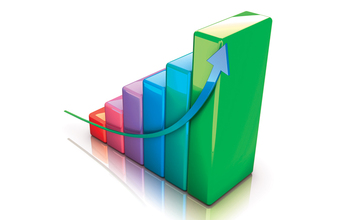
The health of the Indian manufacturing sector continued to strengthen in December, with manufacturers stepping up production and input buying amid efforts to rebuild their inventories following business closures earlier in the year. While firms were able to lift input stocks, and did so at the quickest rate in nearly a decade, holdings of finished goods decreased sharply due to ongoing increases in new work. One area that failed to improve was employment, with jobs shed once again at the end of 2020. Meanwhile, raw material scarcity at suppliers caused delivery delays and the fastest rise in input costs for over two years.
The seasonally adjusted IHS Markit India Manufacturing Purchasing Managers' Index® (PMI®) was at 56.4 in December, a tick higher than November's reading of 56.3 and above the critical 50.0 threshold for the fifth straight month. The latest figure was consistent with a marked improvement in business conditions across the sector.
Reflecting the loosening of COVID-19 restrictions, strengthening demand and improved market conditions, factory orders increased during December. In response, firms lifted production again. In both cases, rates of expansion remained sharp despite easing to four-month lows.
International demand for Indian goods rose in December, but anecdotal evidence suggested that growth was hampered by the COVID-19 pandemic. As a result, new export orders increased at the slowest pace in the current four-month sequence of expansion.
Goods producers continued to make additional input purchases in December, extending the current sequence of growth to five months. Furthermore, the rate of expansion was sharp and accelerated from November.
Commenting on the latest survey results, Pollyanna De Lima, Economics Associate Director at IHS Markit, said: "The latest PMI results for the Indian manufacturing sector continued to point to an economy on the mend, as a supportive demand environment and firms' efforts to rebuild safety stocks underpinned another sharp rise in production.
"It's important to emphasise the broad-based nature of the recovery, with marked expansions in both sales and output noted across each of the three monitored sub-sectors. Once again, the survey brought the bad news of falling employment. However, the trend for jobs is at least moving in the right direction as the rate of contraction softened to the weakest in the current nine-month period of reduction.
"The latest available official data pointed to a 3.5% annual increase in manufacturing production during October, when the PMI Output Index had strengthened considerably.
In the two months since, growth lost some momentum and we are likely to see the official results showing a similar pattern.
"But, when we combine the latest three months we see that the performance of the manufacturing industry for the third quarter of fiscal year 2020/21 was notably better than in the second quarter. The three-month PMI average rose from 51.6 to 57.2."
The rise in input buying in turn helped firms to lift their preproduction inventories. Stocks of purchases grew sharply and at the quickest pace since March 2011.
Conversely, manufacturers saw their stocks of finished goods decline again at the end of the year. The rate of depletion was steep and faster than any seen prior to April. According to survey participants, post-production inventories fell due to strong sales growth.
Employment decreased in December, thereby stretching the current sequence of job shedding to nine months. Companies stated that government guidelines to have employees working only on shifts and difficulties in finding suitable staff were the key factors causing the latest fall in payroll numbers. However, the pace of contraction was moderate and the weakest in the current downturn period.
Input cost inflation accelerated to a 26-month high in December, with panellists noting increased prices for chemicals, metals, plastics and textiles. Output charges were lifted in response to rising cost burdens, but here the rate of inflation was only marginal.
Indian manufacturers maintained an upbeat view that output will increase in the coming year. However, the degree of optimism weakened to a four-month low as some firms were concerned about the lasting effect of the COVID-19 pandemic on the global economy.
END
Source: IHS Markit

































